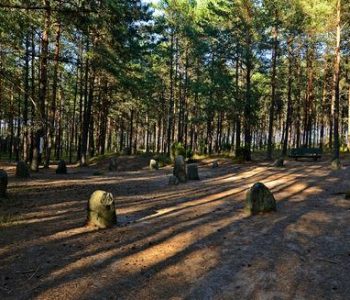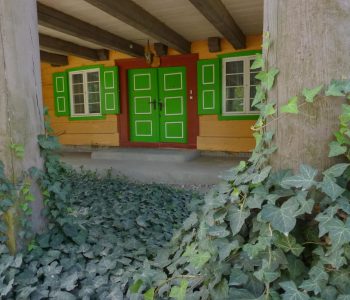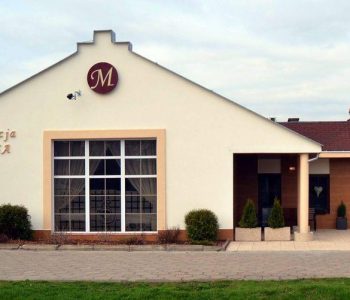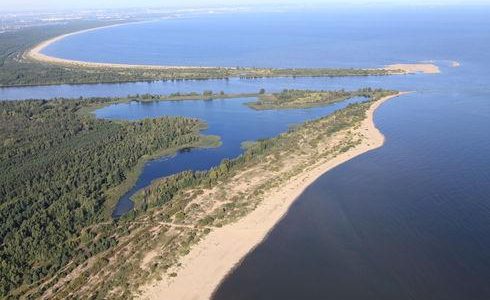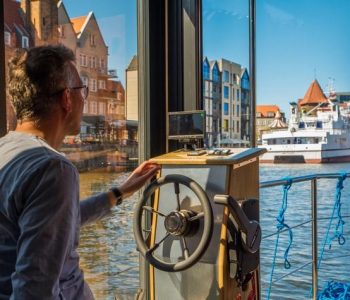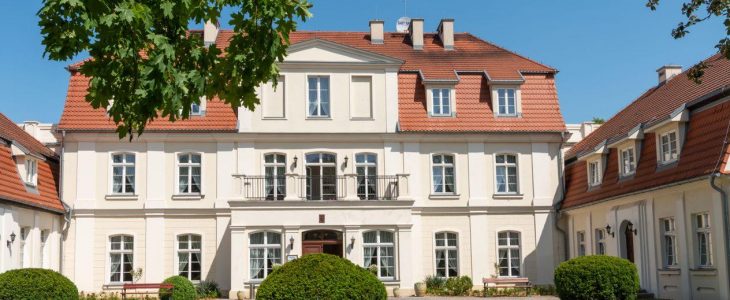The researcher divided the area of Kociewie into primary, covering the vicinity of Pelplin, and extended, where the Kociewie dialect is encountered. Today’s Kociewie is about 3 thousand sq. km. Its east border is the ca. 100-km-long section of the Vistula from near Gruczno on the south to Czatkowy village, located north of Tczew. From the north the region is delimited by the line from Pszczółki – Trąbki Wielkie, Wysin, while the western border runs along Stara Kiszewa, Bartoszy Las, Czarna Woda, Szlachta, Śliwiczki, Drzycim, and then to Gruczno towards the Vistula. In administrative terms, Kociewie is situated in the Pomeranian Voivodeship (entire districts: Starogard and Tczew, part of the Gdańsk District: part of the Trąbki Wielkie Commune and the Kościerzyna District with the Communes of Liniewo and Stara Kiszewa) and in the Kuyavian-Pomeranian Voivodeship (most of the land in the Świecie District, part of the Śliwce Commune in the Tuchola District). There are nine towns in Kociewie: Tczew, Starogard Gdański, Skarszewy, Skórcz, Czarna Woda, Gniew, Pelplin, Nowe, and Świecie. Starogard Gdański is considered the region’s capital.
The name Kociewie can be found in documents from THE early 19th Century. The first mention comes from 1807. Military sources on the history of Pomerania cite the dispatch of Lt. Col. Hurting to General Dąbrowski, in which the name Gociewie comes up. These dispatches contained a great number of misquoted town names, so it is assumed that G instead of K is such a mistake. Another name for the region was Koczewie, featured in the Szczaściejipon poem written in the Kociewie dialect. It originates from Świecie IN 1810-1820. In Florian Ceynowa’s writings we encounter the name Koczevije. Kociewie was also mentioned by Oskar Kolberg in his volume on Pomerania.
To this day, researchers have not managed to conclusively determine the etymology of the word Kociewie. Many diverse concepts and hypotheses have been proposed on the subject, but none of them have been universally accepted. A vast majority of etymologies focus on the Koć- root. According to these, Kociewie derives from the following:
– kociełki, denoting the land’s numerous hollows, marshes, and bogs surrounded by hills (Rev. Fankidejski’s concept);
– kotten, meaning cottages (according to J. Łęgowski);
– kocza, kuczen – loosely-built huts (according to Rev. J. Kujot);
– kociewie – feathers, dump, silt (according to S. Kozierski, A. Brückner);
– kocanki – plant name (according to W. Taszycki);
– koc – fish trap (according to J. Treder);
– kaczy – Kociewie, i.e. Kacewie ‘the land upon the Duck’s (Kacza) river'(according to J. Haliczer);
– Gocie – the Goths (according to F. Bujak, J. Czekanowski).
Hanna Popowska-Taborska, in her research on the name of Kociewie, referred to Rev. Bernard Sychta, who compared Kociewie with the expression kocie wiarë, meaning a ‘desolate, tumble-down region’ and the word kocevinë which carries a similar meaning. Popowska-Taborska sees Kociewie as a nickname, genetically pejorative (which may explain the fact that during the research carried out by Z. Stamirowska, the region’s inhabitants refused to be associated with the name). Its derivational base would be the appelative name ‘kot’, being an analogous formation to chrószczewie – ‘bush, thicket’ quoted in the “Kociewie Dictionary”. The rarely-recorded form koćejeve would contain the base extended with the suffix -ej.
In turn, Bogusław Kreja claims that the name Kociewie is borrowed from one of the East Slavic languages. Russian has the word kočevьe, meaning “nomadic camp”. It is a deverbative noun created with the use of the -ьe suffix from the verb kočevat, meaning “lead a nomadic life”. The name Koczewie in Ceynowa’s writings is similar to the Russian derivation.
Kreja adopted Kujot’s view about the area of Kociewie being smaller in the past (i.e. the areas left of the Wierzyca, between Nowa Cerkiew and Królów Las) and assumed that before the name appeared in written sources it had to function in the consciousness of inhabitants, i.e. according to Kreja in the 18th Century. At that time armies marched through Pomerania, including the Russian army that was also garrisoned in this area. Sources lack direct evidence that Russians stayed near Gniew and Pelplin, but Russian coins from 1759-1762 were found in the monastery in Pelplin. Besides, Kreja cites toponymic examples (such as the village Rusek, the farm Rusin) and anthroponymic examples (names such as Sobkow, Kołokolcow), which may prove that Russian troops were present in Pomerania in the 18th Century.

